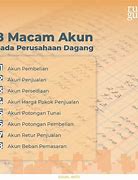
Hagia Sophia Adalah
How to Get to Hagia Sophia?
Hagia Sophia is located in the Sultan Ahmed district, easily reached by the tramway. Visitors can get by tramway and head towards Sultan Ahmed station; the mosque is a 5-minute walk from the station. Or they can use any taxi to get there.
aya sophia Cemetery
Hagia Sophia cemetery is part of the aya sophia complex. It has graves for five Ottoman Sultans who ruled the Ottoman Empire during the 16th and 17th centuries: Muhammad III, Selim II, Murad III, Ibrahim I, and Mustafa I, as well as some of their children. The cemetery has an impressive architecture ottoman style, with attractive calligraphy in Arabic.
th-century restoration
Following the building's conversion into a mosque in 1453, many of its mosaics were covered with plaster, due to Islam's ban on representational imagery. This process was not completed at once, and reports exist from the 17th century in which travellers note that they could still see Christian images in the former church. In 1847–1849, the building was restored by two Swiss-Italian Fossati brothers, Gaspare and Giuseppe, and Sultan Abdulmejid I allowed them to also document any mosaics they might discover during this process, which were later archived in Swiss libraries.[252][better source needed] This work did not include repairing the mosaics, and after recording the details about an image, the Fossatis painted it over again. The Fossatis restored the mosaics of the two hexapteryga (singular Greek: ἑξαπτέρυγον, pr. hexapterygon, six-winged angel; it is uncertain whether they are seraphim or cherubim) located on the two east pendentives, and covered their faces again before the end of the restoration.[253] The other two mosaics, placed on the west pendentives, are copies in paint created by the Fossatis since they could find no surviving remains of them.[253] As in this case, the architects reproduced in paint damaged decorative mosaic patterns, sometimes redesigning them in the process. The Fossati records are the primary sources about a number of mosaic images now believed to have been completely or partially destroyed in the 1894 Istanbul earthquake. These include a mosaic over a now-unidentified Door of the Poor, a large image of a jewel-encrusted cross, and many images of angels, saints, patriarchs, and church fathers. Most of the missing images were located in the building's two tympana.
One mosaic they documented is Christ Pantocrator in a circle, which would indicate it to be a ceiling mosaic, possibly even of the main dome, which was later covered and painted over with Islamic calligraphy that expounds God as the light of the universe. The Fossatis' drawings of the Hagia Sophia mosaics are today kept in the Archive of the Canton of Ticino.[254]
Why is aya sophia Controversial? Is It a Church or a Mosque?
There were many calls for reconverting Hagia Sophia into a mosque and a church by Muslims and Christians, respectively. However, the Turkish government decided to turn it back into a mosque building upon Sultan Mehmed Fatih’s decision of converting it into a mosque. It is also said that Sultan Mehmed Fatih bought this church from the Romans with his own money, turned it into a mosque, and endowed it to Muslims.
During a speech on reopening aya sophia to worship as a mosque, the Turkish president, Recep Tayyip Erdogan, emphasized that the Turkish government’s decision to turn the mosque into a museum in the 1930s was a big mistake. “The decision was not only a betrayal for history but also a law violation because Hagia Sophia is not state property, rather a property for the endowment of Sultan Mehmed Fatih,” said Erdogan.
th-century restoration
Many mosaics were uncovered in the 1930s by a team from the Byzantine Institute of America led by Thomas Whittemore. The team chose to let a number of simple cross images remain covered by plaster but uncovered all major mosaics found.
Because of its long history as both a church and a mosque, a particular challenge arises in the restoration process. Christian iconographic mosaics can be uncovered, but often at the expense of important and historic Islamic art. Restorers have attempted to maintain a balance between both Christian and Islamic cultures. In particular, much controversy rests upon whether the Islamic calligraphy on the dome of the cathedral should be removed, in order to permit the underlying Pantocrator mosaic of Christ as Master of the World to be exhibited (assuming the mosaic still exists).[255]
The Hagia Sophia has been a victim of natural disasters that have caused deterioration to the buildings structure and walls. The deterioration of the Hagia Sophia's walls can be directly attributed to salt crystallization. The crystallization of salt is due to an intrusion of rainwater that causes the Hagia Sophia's deteriorating inner and outer walls. Diverting excess rainwater is the main solution to the deteriorating walls at the Hagia Sophia.[256]
Built between 532 and 537, a subsurface structure under the Hagia Sophia has been under investigation, using LaCoste-Romberg gravimeters to determine the depth of the subsurface structure and to discover other hidden cavities beneath the Hagia Sophia. The hidden cavities have also acted as a support system against earthquakes. With these findings using the LaCoste-Romberg gravimeters, it was also discovered that the Hagia Sophia's foundation is built on a slope of natural rock.[257]
The Imperial Gate mosaic is located in the tympanum above that gate, which was used only by the emperors when entering the church. Based on style analysis, it has been dated to the late 9th or early 10th century. The emperor with a nimbus or halo could possibly represent emperor Leo VI the Wise or his son Constantine VII Porphyrogenitus bowing down before Christ Pantocrator, seated on a jewelled throne, giving his blessing and holding in his left hand an open book.[258] The text on the book reads: "Peace be with you" (John 20, John 20:19, 20:26) and "I am the light of the world" (John 8, John 8:12). On each side of Christ's shoulders is a circular medallion with busts: on his left the Archangel Gabriel, holding a staff, on his right his mother Mary.[259]
The Viking Inscription
In the southern section of Hagia Sophia, a 9th-century Viking inscription has been discovered, which reads, "Halvdan was here." It is theorized that the inscription was created by a Viking soldier serving as a mercenary in the Eastern Roman Empire.[249]
The first mosaics which adorned the church were completed during the reign of Justin II.[250] Many of the non-figurative mosaics in the church come from this period. Most of the mosaics, however, were created in the 10th and 12th centuries,[251][better source needed] following the periods of Byzantine Iconoclasm.
During the Sack of Constantinople in 1204, the Latin Crusaders vandalized valuable items in every important Byzantine structure of the city, including the golden mosaics of the Hagia Sophia. Many of these items were shipped to Venice, whose Doge Enrico Dandolo had organized the invasion and sack of Constantinople after an agreement with Prince Alexios Angelos, the son of a deposed Byzantine emperor.
Hagia Sophia History: Information about Hagia Sophia
Located on the European side of Istanbul, Aya Sofya Mosque is one of the most prominent symbols of the Constantinople Conquest (Istanbul) by the Ottoman Sultan, Mehmed Fatih, on 29th May 1453, after it remained insurmountable to the Islamic conquests for several centuries.
Aya Sofia or aya sophia , which was converted from a church into a mosque after Constantinople Conquest, is one of the world’s most famous artistic and architectural monuments and most-visited museums.
Seen as “the 8th wonder of the world” by historians, this majestic edifice was built in 537. It is an impressive monument, located in the Sultan Ahmed District, used for 481 as a mosque before it was converted to a museum in 1934.
Historically speaking, the 2020 year was a turning point in the monument’s history when the Turkish Supreme Administrative Court overturned the cabinet decision issued in 1934, reopened Aya Sofia for worship and prayer, and transferred its affiliation from the Ministry of Culture and Tourism to the Presidency of Religious Affairs.
Emperor Alexander mosaic
The Emperor Alexander mosaic is not easy to find for the first-time visitor, located on the second floor in a dark corner of the ceiling. It depicts the emperor Alexander in full regalia, holding a scroll in his right hand and a globus cruciger in his left. A drawing by the Fossatis showed that the mosaic survived until 1849 and that Thomas Whittemore, founder of the Byzantine Institute of America who was granted permission to preserve the mosaics, assumed that it had been destroyed in the earthquake of 1894. Eight years after his death, the mosaic was discovered in 1958 largely through the researches of Robert Van Nice. Unlike most of the other mosaics in Hagia Sophia, which had been covered over by ordinary plaster, the Alexander mosaic was simply painted over and reflected the surrounding mosaic patterns and thus was well hidden. It was duly cleaned by the Byzantine Institute's successor to Whittemore, Paul A. Underwood.[273][274]
The Empress Zoe mosaic on the eastern wall of the southern gallery dates from the 11th century. Christ Pantocrator, clad in the dark blue robe (as is the custom in Byzantine art), is seated in the middle against a golden background, giving his blessing with the right hand and holding the Bible in his left hand. On either side of his head are the nomina sacra IC and XC, meaning Iēsous Christos. He is flanked by Constantine IX Monomachus and Empress Zoe, both in ceremonial costumes. He is offering a purse, as a symbol of donation, he made to the church, while she is holding a scroll, symbol of the donations she made. The inscription over the head of the emperor says: "Constantine, pious emperor in Christ the God, king of the Romans, Monomachus". The inscription over the head of the empress reads as follows: "Zoë, the very pious Augusta". The previous heads have been scraped off and replaced by the three present ones. Perhaps the earlier mosaic showed her first husband Romanus III Argyrus or her second husband Michael IV. Another theory is that this mosaic was made for an earlier emperor and empress, with their heads changed into the present ones.[275]
The Comnenus mosaic, also located on the eastern wall of the southern gallery, dates from 1122. The Virgin Mary is standing in the middle, depicted, as usual in Byzantine art, in a dark blue gown. She holds the Christ Child on her lap. He gives his blessing with his right hand while holding a scroll in his left hand. On her right side stands emperor John II Comnenus, represented in a garb embellished with precious stones. He holds a purse, symbol of an imperial donation to the church. His wife, the empress Irene of Hungary stands on the left side of the Virgin, wearing ceremonial garments and offering a document. Their eldest son Alexius Comnenus is represented on an adjacent pilaster. He is shown as a beardless youth, probably representing his appearance at his coronation aged seventeen. In this panel, one can already see a difference with the Empress Zoe mosaic that is one century older. There is a more realistic expression in the portraits instead of an idealized representation. The Empress Irene (born Piroska), daughter of Ladislaus I of Hungary, is shown with plaited blond hair, rosy cheeks, and grey eyes, revealing her Hungarian descent. The emperor is depicted in a dignified manner.[276]
The Deësis mosaic (Δέησις, "Entreaty") probably dates from 1261. It was commissioned to mark the end of 57 years of Latin Catholic use and the return to the Eastern Orthodox faith. It is the third panel situated in the imperial enclosure of the upper galleries. It is widely considered the finest in Hagia Sophia, because of the softness of the features, the humane expressions and the tones of the mosaic. The style is close to that of the Italian painters of the late 13th or early 14th century, such as Duccio. In this panel the Virgin Mary and John the Baptist (Ioannes Prodromos), both shown in three-quarters profile, are imploring the intercession of Christ Pantocrator for humanity on Judgment Day. The bottom part of this mosaic is badly deteriorated.[277] This mosaic is considered as the beginning of a renaissance in Byzantine pictorial art.[278]
Mosque and former church in Istanbul, Turkey
Hagia Sophia,[a] officially the Hagia Sophia Grand Mosque,[b] is a mosque and former church serving as a major cultural and historical site in Istanbul, Turkey. The last of three church buildings to be successively erected on the site by the Eastern Roman Empire, it was completed in AD 537. The site was an Eastern rite church from AD 360 to 1453, except for a brief time as a Latin Catholic church between the Fourth Crusade and 1261.[4] After the fall of Constantinople in 1453, it served as a mosque until 1935, when it became a museum. In 2020, the site once again became a mosque.
The current structure was built by the Byzantine emperor Justinian I as the Christian cathedral of Constantinople for the Byzantine Empire between 532 and 537, and was designed by the Greek geometers Isidore of Miletus and Anthemius of Tralles.[5] It was formally called the Church of God's Holy Wisdom (Greek: Ναὸς τῆς Ἁγίας τοῦ Θεοῦ Σοφίας, romanized: Naòs tês Hagías toû Theoû Sophías)[6][7] and upon completion became the world's largest interior space and among the first to employ a fully pendentive dome. It is considered the epitome of Byzantine architecture[8] and is said to have "changed the history of architecture".[9] The present Justinianic building was the third church of the same name to occupy the site, as the prior one had been destroyed in the Nika riots. As the episcopal see of the ecumenical patriarch of Constantinople, it remained the world's largest cathedral for nearly a thousand years, until the Seville Cathedral was completed in 1520. Beginning with subsequent Byzantine architecture, Hagia Sophia became the paradigmatic Orthodox church form, and its architectural style was emulated by Ottoman mosques a thousand years later.[10] It has been described as "holding a unique position in the Christian world"[10] and as an architectural and cultural icon of Byzantine and Eastern Orthodox civilization.[10][11][12]
The religious and spiritual centre of the Eastern Orthodox Church for nearly one thousand years, the church was dedicated to the Holy Wisdom.[13][14][15] It was where the excommunication of Patriarch Michael I Cerularius was officially delivered by Humbert of Silva Candida, the envoy of Pope Leo IX in 1054, an act considered the start of the East–West Schism. In 1204, it was converted during the Fourth Crusade into a Catholic cathedral under the Latin Empire, before being returned to the Eastern Orthodox Church upon the restoration of the Byzantine Empire in 1261. Enrico Dandolo, the doge of Venice who led the Fourth Crusade and the 1204 Sack of Constantinople, was buried in the church.
After the fall of Constantinople to the Ottoman Empire in 1453,[16] it was converted to a mosque by Mehmed the Conqueror and became the principal mosque of Istanbul until the 1616 construction of the Sultan Ahmed Mosque.[17][18] Upon its conversion, the bells, altar, iconostasis, ambo, and baptistery were removed, while iconography, such as the mosaic depictions of Jesus, Mary, Christian saints and angels were removed or plastered over.[19] Islamic architectural additions included four minarets, a minbar and a mihrab. The Byzantine architecture of the Hagia Sophia served as inspiration for many other religious buildings including the Hagia Sophia in Thessaloniki, Panagia Ekatontapiliani, the Şehzade Mosque, the Süleymaniye Mosque, the Rüstem Pasha Mosque and the Kılıç Ali Pasha Complex. The patriarchate moved to the Church of the Holy Apostles, which became the city's cathedral.
The complex remained a mosque until 1931, when it was closed to the public for four years. It was re-opened in 1935 as a museum under the secular Republic of Turkey, and the building was Turkey's most visited tourist attraction as of 2019[update].[20]
In July 2020, the Council of State annulled the 1934 decision to establish the museum, and the Hagia Sophia was reclassified as a mosque. The 1934 decree was ruled to be unlawful under both Ottoman and Turkish law as Hagia Sophia's waqf, endowed by Sultan Mehmed, had designated the site a mosque; proponents of the decision argued the Hagia Sophia was the personal property of the sultan. The decision to designate Hagia Sophia as a mosque was highly controversial. It resulted in divided opinions and drew condemnation from the Turkish opposition, UNESCO, the World Council of Churches and the International Association of Byzantine Studies, as well as numerous international leaders, while several Muslim leaders in Turkey and other countries welcomed its conversion into a mosque.



